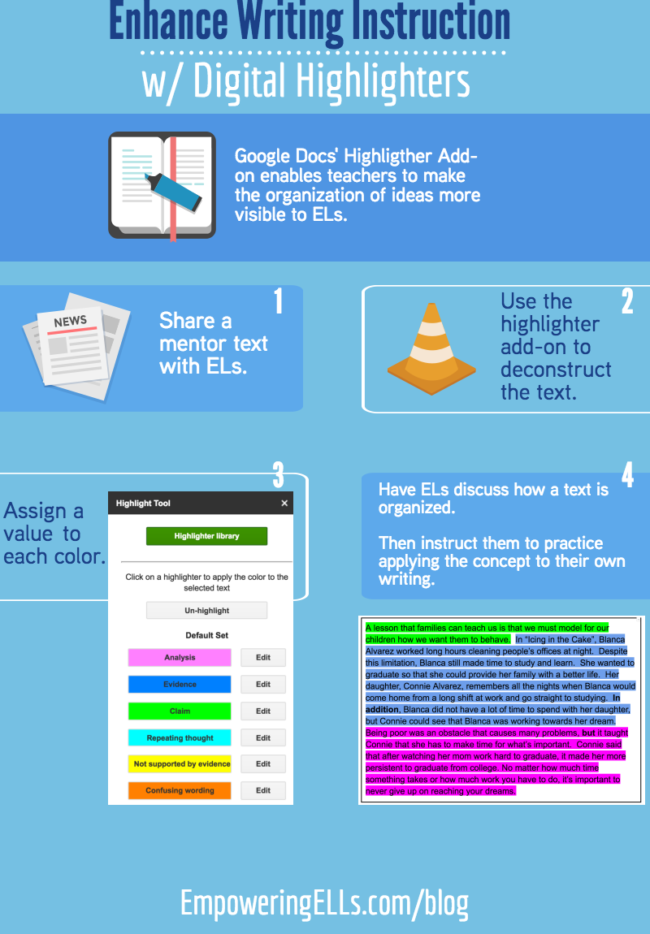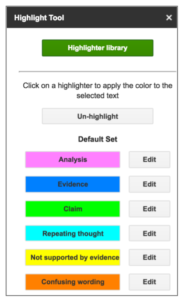Part 5 of Transforming Instruction Through Technology series.
Because there’s limited time to teach everything in a year’s scope and sequence, I like to apply Joseph M. Juran’s 80/20 principle to education. The 80/20 principle means that you should focus only on the handful of factors that produce the majority of the results.
Regarding writing, nothing is more essential to clarity than logically organizing ideas. Sentences with flawless grammar that are illogically sequenced cause readers to be confused and frustrated. The organization of writing is like a master floor plan while elements like word choice, grammar, and mechanics are the nails that hold your ideas together.
Thus, teaching writing organization is one of those handfuls of factors that will have the biggest impact on your students writing. In today’s post, we’re going to use a traditional piece of 21st-century technology – Google docs – to teach organization using the Google Highlights function.
Steps to Deconstruct Writing with Google Highlights
1. Introducing Color-Coded Highlighting
At the beginning of the first lesson on organization, I start off by telling students that a paragraph contains different types of sentences, usually a claim, evidence, and analysis. I explain that we’re going to learn what each of their roles and where they’re placed in a paragraph.
(Yes, I know that there are more types of sentences than these but because I want to start off with the basics of writing first, I prioritize these three types.)
I explain that I’ll use the Google Doc’s highlighter function to make the differences between these types of paragraphs clearly visible. This is my color-coding system when deconstructing writing.
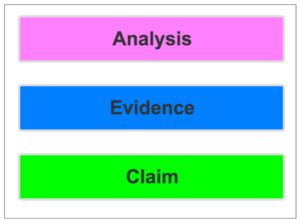
2. Presenting a Mentor Text
I then use Google Classroom to share with students a mentor text that’s also projected on the board. The sample paragraph below was used to model how to write an expository paragraph for our grade 7 Family unit.
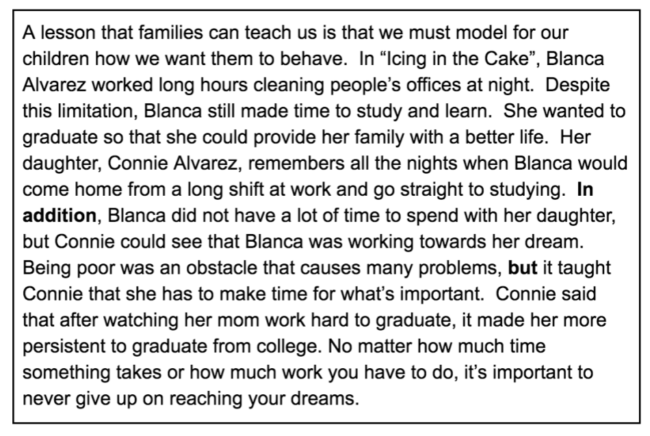 The task was to explain the lessons a person can learn from their family, and students had to use the texts and videos from the unit to support their answers. While showing students this text alone doesn’t teach them how to organize ideas, deconstructing the paragraph along side them does.
The task was to explain the lessons a person can learn from their family, and students had to use the texts and videos from the unit to support their answers. While showing students this text alone doesn’t teach them how to organize ideas, deconstructing the paragraph along side them does.
3. Teaching Deconstruction
I read the first sentence aloud, stop at the end of the sentence, and ask students to describe the role of that particular sentence. Once they’ve discussed in small groups, fed back their answers to the whole class, and agreed on the correct answer, I highlight it according to the color-coding system.
For example, the first sentence contains the author’s belief. We talk about how that should be the claim, and I highlight it green. We repeated this process again until all the sentences were discussed, evaluated, and highlighted like this: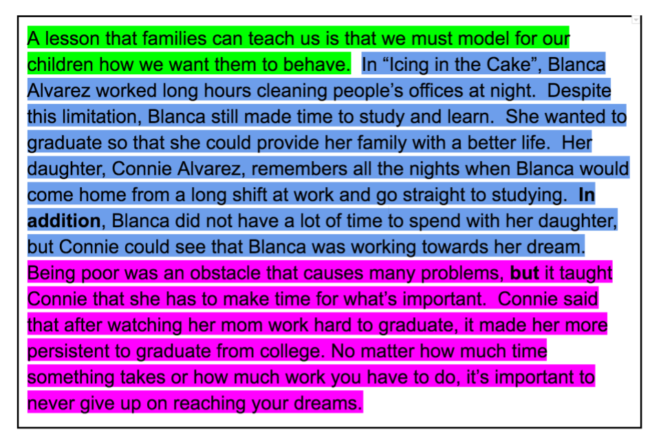 Student Practice
Student Practice
After modeling how to structure writing, I then pair students up and they collaboratively write their own paragraphs on another lesson that one can learn from their families. They collaboratively write on same Google Doc so I can monitor their work.
After teaching this small lesson on writing deconstruction, I notice that students consistently refer back to the highlights to help structure their own writing. Once they’ve written a paragraph, I have them collectively deconstruct this paragraph using the same color-coding system. This phase of the lesson reveals their ability to organize writing, while the discussion helps internalize the role of each sentence.
Google Docs Highlight
Prior to the advent of Google Docs, I would have taught writing deconstruction with printed copies of a text for students and simple colored markers. Google Highlights substituted the original printed copies and augmented the lesson with two improved functionalities.
A. Create a highlighter key.
I create a key like the image below to associate different colors with different types of sentences. The key is not to have too many. I started off with six, but I’ve slimmed down to just three in my introductory lesson with Google Highlights. You don’t have to create another poster to represent the key because it’s part of the program.
B. Google Docs increases the amount and level of collaboration.
Students can simultaneously work on the same document on their own devices and can view other students’ work. This is immensely helpful.
This video tutorial by Beth Sullivan will show you how to install and use the Google Highlight add-on.
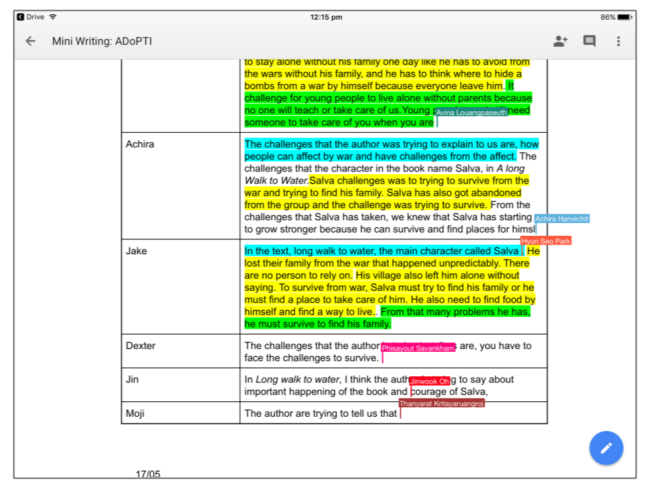
Takeaways
Combined, these two functions enhance a practice that has worked well previously without technology. I didn’t sprinkle on technology just for the decorative purposes. Instead, the enhancements made writing instruction more visible for ELs and provided opportunities for them to both learn and authentically use language.
Our conversations during mini-writing conferences can be more productive and specific. Instead of saying,”I need more details” or “Your writing isn’t effective”, I now say, “You started your paragraph with evidence from the text. Tell me your reasoning behind this decision.” Using Google Highlights facilitates discussions about organizing ideas. and it became like a little buoys that guides ELs as they navigated through the writing process.
Technology is never the centerpiece of instruction. It’s just a conduit to teaching and learning. Parris, Estrada, and Honigsfeld further writes that, “When a technology tool is successfully integrated into a classroom, the technology itself becomes ‘invisible’ and supports teachers as they create, deliver, and assess learning experiences to engage students and improve academic outcomes in an exciting new way” (2016, Kindle Locations 214-215).
Parris, H., Estrada, L., & Honigsfeld, A. M. (2016). ELL frontiers: Using technology to enhance instruction for English learners. Thousand Oaks, CA: Corwin.

